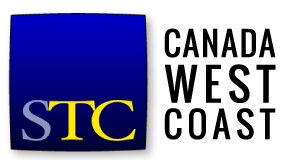
What is your current position?
I am currently working as a technical writer at Seon Design, which creates mobile surveillance software and hardware. All the cameras you see on buses and trains, for example, are recording 24/7. For solutions like these, you need instructions, videos, and guides. At the moment, I am working on a software user guide and perhaps release notes. Two months ago, I completed a series of videos.
Who inspires you professionally?
My mother was way ahead of her time and very ambitious. She was a fitness counsellor, and she continues to do that with a little freelancing and volunteer work. I find her very inspiring.
What do you find the most surprising aspect of technical writing?
Ten years ago, it was customary to use a desktop application and write very long descriptive texts. Today, if you don’t have an online presence or online help, or even better, context-sensitive help, you are not considered current. I am amazed that we have made a lot of progress, but we have actually hung on to what we were doing twenty years ago. The new ideas are very valid, but so are the old ideas. Software developers will tell you that what they were doing 15 years ago, they are not doing any more. It’s not the same for technical writers. Today I could be writing online help, and tomorrow I could go back to Microsoft Word. Everything that goes on is still valid. That’s amazing.
Can you compare the tech writing environments in Canada and India?
India is comparatively younger. You see so many young people walking in and out of any corporate office. You see people across age groups in North America, and that is great because with age comes experience. In India there is a lot more energy. Everybody has ideas, and everybody is a competitor. There’s a lot of freshness in India; however, there is more depth and maturity here in Canada.
Here, it is early to work and early home. In India, people come to work a little later and leave a little later. Here, people separate their professional life and their personal life. They come to work eight hours and go home to whatever they like to do, but in India, there is a lot of cultural activity going on while at work. They might take an hour or two off for a cultural activity — for example, a meal.
Here, assertiveness is expected of you. We expect employees to have their own opinions and be very assertive about what is right, but that’s not very common in India. People in India are also learning a lot from North America. For instance, a company in India might be experimenting with an Agile environment but it’s already established in North America.
What do you like to do outside of your career? Interesting hobbies or pastimes?
I like to experiment with preparing my own cosmetics. I have a whole range of DIYs that I use for myself and give away to my friends: everything from soaps to lotions to makeup. I also bake a lot. I focus on flavour and healthy food — for example, beetroot flour cake. I enjoy blogging. I talk about food for the fitness-conscious. I am also very active. I like jogging, and I work out at home.

Excellent article. I enjoyed learning about the technical writing industry outside of North America.